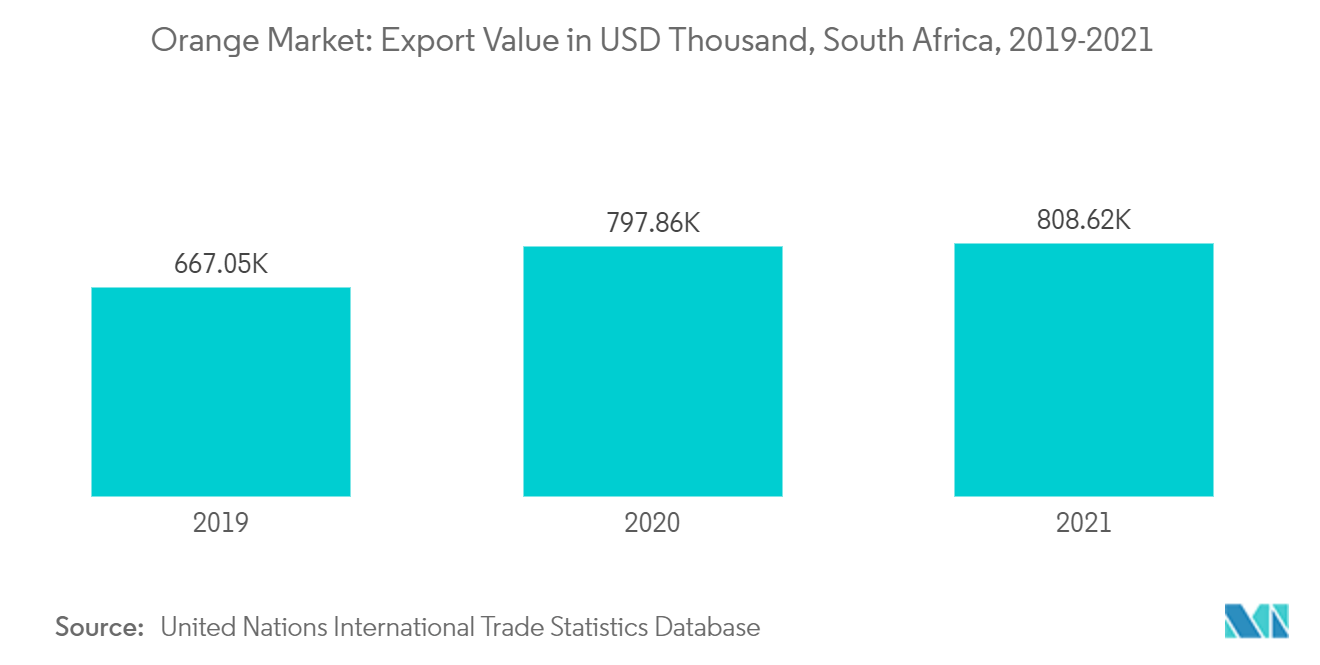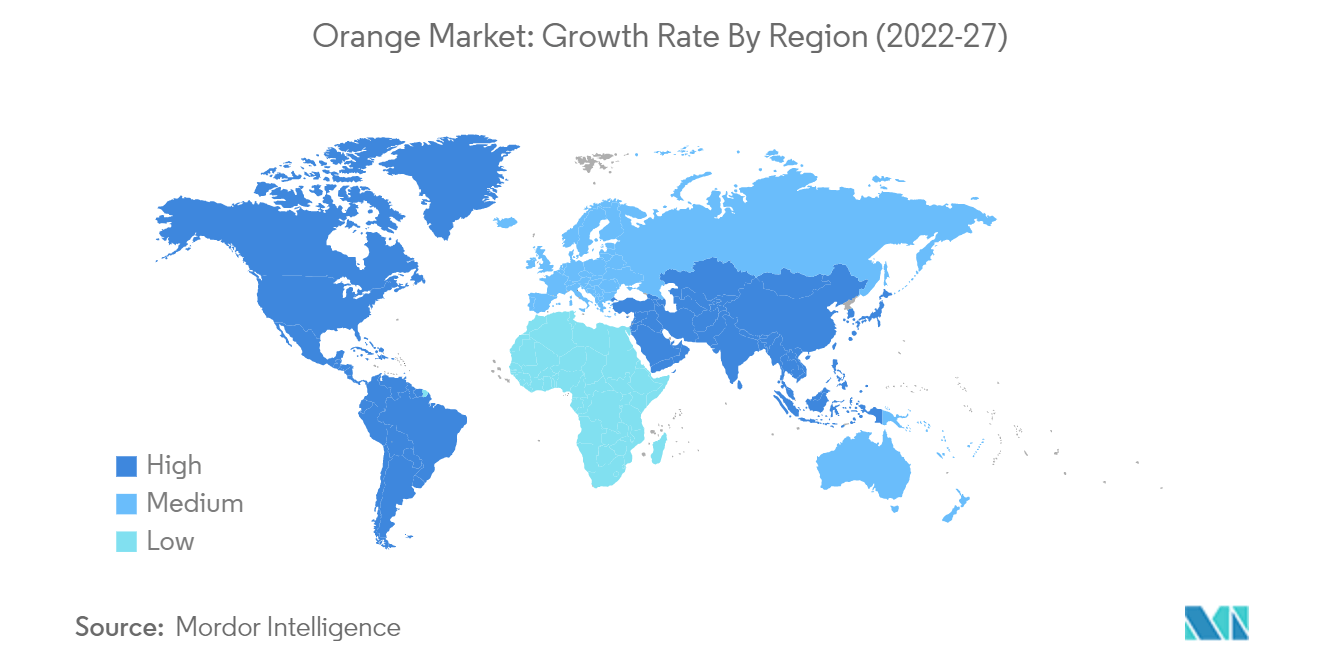Market Trends of Orange Industry
Growing Seasonal Consumption of Orange
Oranges consumption patterns appear to vary by demographic, economic, and climatic characteristics. The demand for oranges peaks during November, December, and January, when the temperatures are slightly lower. The winter season is highly suitable for the consumption of oranges, owing to their health benefits. Oranges are famous due to their natural sweetness. They are a low-calorie, highly nutritious citrus fruit that contributes to firm, clear skin and can help lower the risk of many health conditions.
Subsequently, consumers in different regions, including North America and Europe, are shifting their preferences toward orange juice. According to a USDA report, in the United States, the Northeast consumers show the strongest preference for orange juice and those in the West for fresh oranges compared with consumers elsewhere. Consumers in the Midwest and South consume fewer orange products overall. However, the per capita consumption of fresh oranges is constantly growing across the country, particularly during winter, owing to their high availability.
According to the United Nations International Trade Statistics Database, the exports of oranges to the world have significantly increased in recent years, owing to the escalating consumption during the winter months, which varies for different countries. For instance, the export of oranges from South Africa reached 1.29 million metric tons in 2021, an increase of 3.2% from the past year. Oranges are South Africa's most extensive citrus type and account for roughly 60% of all South Africa's citrus exports. Furthermore, oranges are primarily grown from June to September, but consumption peaks during winter.

Brazil Holds a Significant Market Position
Even though Asia Pacific is the largest market for oranges, Brazil possesses a noteworthy market share. Despite being one of the largest producers of oranges globally, Brazil accounts for one of the leading consumers of oranges. Domestic consumption of fresh oranges is growing as consumers demand freshly squeezed orange juice in their homes, bakeries, and restaurants. They also look for pasteurized juice produced at factories operating in the country. According to the Brazilian Association of Citrus Exporters, the country's juice production in 2021/2022 is expected to be 821,600 metric tons of frozen concentrate, the equivalent of orange juice. Further, the domestic market for fresh oranges has become a significant consumer of Brazil's total orange production. More than 100.0 million boxes of oranges, each weighing 40.8 kilograms, equivalent to approximately 30.0% of Brazil's output, are consumed by the Brazilian population annually. According to the Brazilian Association of Citrus Exporters, in the year 2021/2022, 224 million boxes of 40.8 kg each were utilized for processing, constituting an increase of 2 million boxes from 2020/2021.
Additionally, major juice industries in Brazil export almost their entire production to international destinations. Due to seasonal consumption and eventual demand, exports are high before the onset of the winter season. The export of orange juices from the country from July to October 2022 was 377.9 metric tons of Frozen Concentrate orange juice equivalent. Hence, the growing trend of juice shops in Brazil selling various fruits, including orange extracts and pulp, has increased the demand for fresh oranges in the country.

